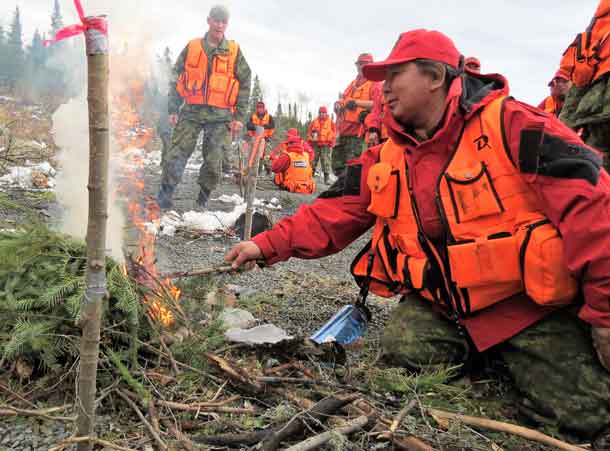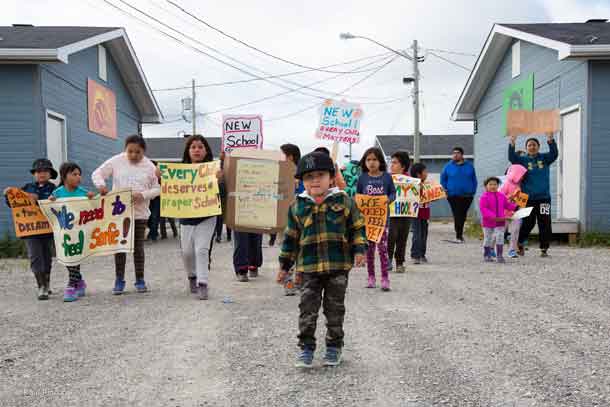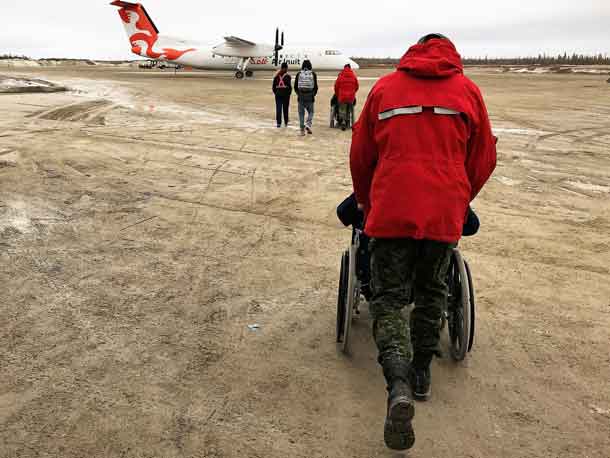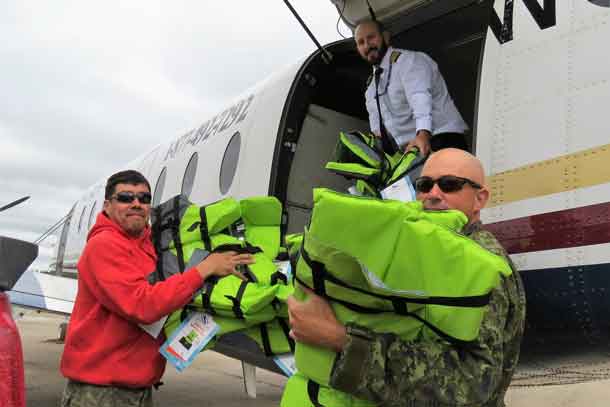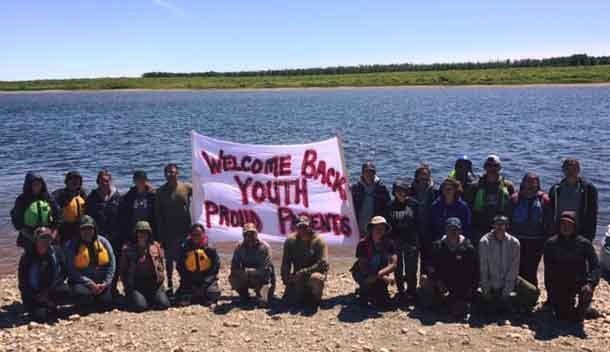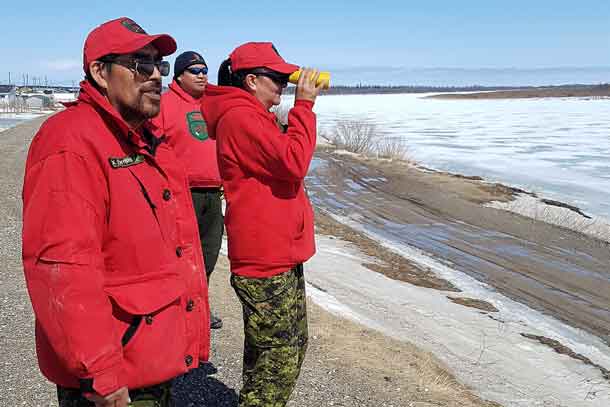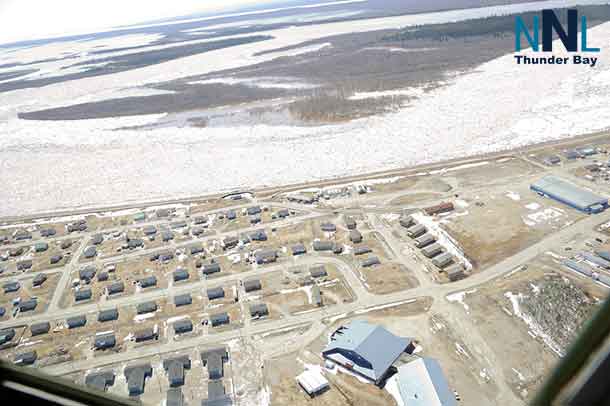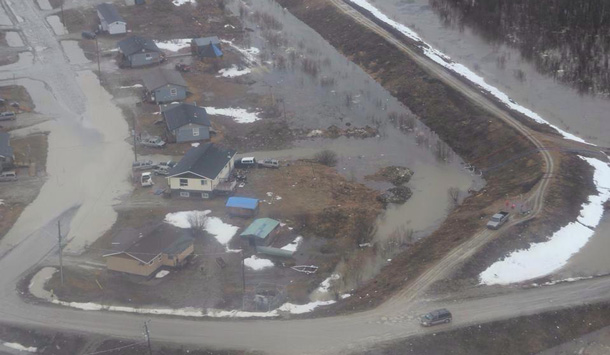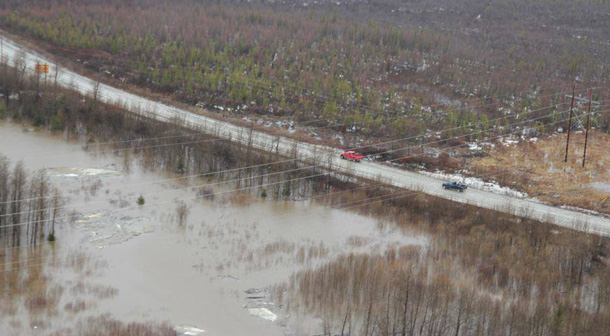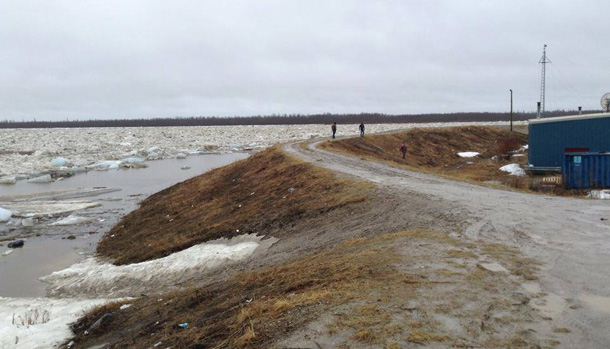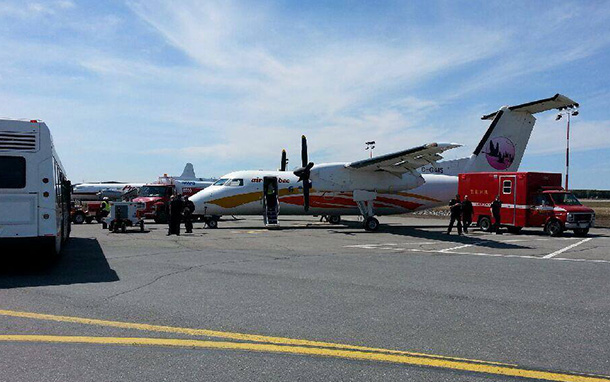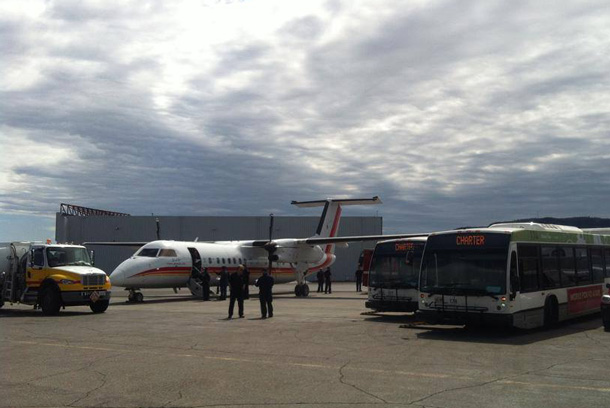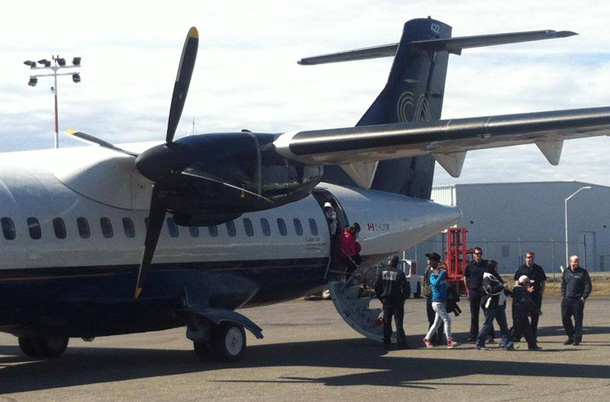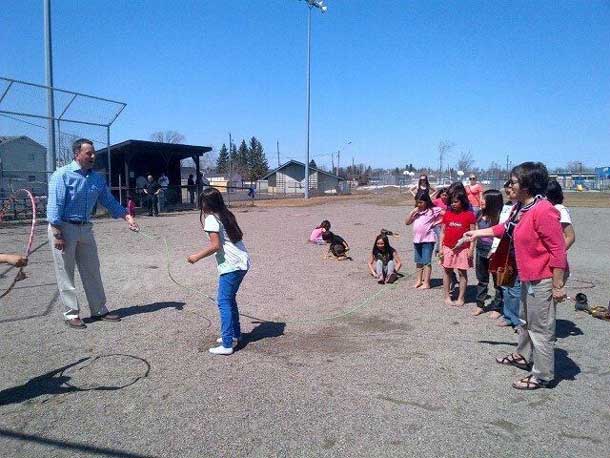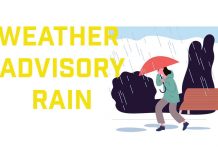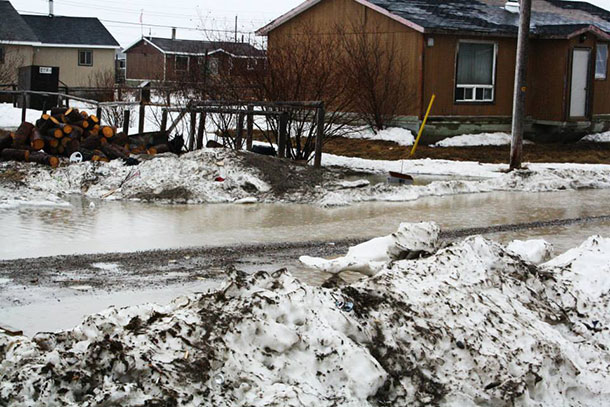
Submitted by Aimee Williams
KASHECHEWAN – This is my story.
I grew up in Kashechewan First Nation near James Bay in Northern Ontario, along the northern shore of the Albany River. I’ve lived here on and off since my childhood. Currently, I am back home with a one-year-old, needing to save money so that I can go back to school and live in the city.
As a single parent, it was difficult to do that in the city, as I needed support. I have always loved living here. I love being close to family and friends. As an isolated reserve in Northern Ontario, access to nature is just a few steps back into the community. Memories of swimming in the river fill my childhood days. The current was so quick that you are able to go underwater in one spot and come back up in a completely different area.
“Where the river flows fast” – this is the English translation of Kashechewan in Cree. As I grew older, especially during springtime, I find that the name can be scary, too.
Kashechewan has its perks. The one thing we can do without is the annual break-up. We’ve learned that in the 1950s, the people that moved to this location in the Albany Reserve were told that if they needed help, they were to reside here. Life was difficult then. I’ve heard stories from my late grandparents that food can be scarce at times. Moving to this spot, while not ideal, was something most families did because really, they did not have much of a choice.
In 1997, a Flood Control Ring Dyke was completed. It is a five-kilometre perimeter dyke surrounding the community. A Flood Control Ring Dyke is intended to protect the community from the annual spring breakup. The community has completely flooded in 1976 and 1985. I have heard stories about those times, how the river overflowed its banks and the community flooded.
After the dyke was completed, people trusted it and felt safe. Depending on which part of town you are in, it ranges from 10 metres to 12 metres—that is from the river and the top of the dyke. That is 30 to 36 feet of land from the river to the top of the dyke. For comparison, the standard home from floor to ceiling is 8 feet.
The year 2006 was a turning point for many people, including myself. I was a nine-year-old at the time.
The day started out normal. I say normal because it is something we do when spring flooding threatens the community. Stage One evacuation was taking place; this stage includes Elders, the sick, pregnant women and women with babies. My mother, my sister Hilary and I were helping with delivering wheelchairs to Elders to the airport when people noticed that the airport runway and airport road to the community were starting to flood. My mother, Hilary and I saw the pilots along with the airport crew rushing to get everyone on the flights as the water was flooding the runway. Propellers were already running. The mad rush to get people on the airplanes started. I learned later that people not meant to go out on those flights were rushed onto planes as well. The planes needed to leave as soon as possible.
My mother ran out of the airport building and basically said that the water was coming and that we have to try and race back into town. I never asked her why we had to go back into town, I assume now it was because she was not able to think clearly. We jumped into the truck, rushing down the airport road to town while the water was coming beside us and behind us. Hilary and I screamed as hard as we could to our mom to get us back into town. We made it! Barely, but we did. Little did we know that it was just the beginning.
The sudden rise of the water and ice levelled with the dyke caused chaos in town—everyone running or speeding home trying to get ready, knowing that the water could come in any moment. The airport was completely flooded at this point. The only way out of the community was helicopters to the next town, slowing the process even more. People were scared because they could see the ice over the dyke. There were so many people waiting to be evacuated out this way that there was no thought given that if the dykes failed, the oncoming water would have killed all waiting to be flown out. Again, I think it was because people were not thinking properly; they just wanted to get out safely with their children.
For the next few nights, we waited to be taken out of the community. We lived in fear. We were not able to sleep because we needed to be able to hear the alarms indicating the water was coming over and move to safer locations. Many families prepared boats but other families, like mine, made ways to have quick access onto the rooftop. It was the only available option. I don’t know if that would have been safe as I have also found out the rush of water over the dyke would most likely have levelled the housing in the community.
Thankfully, it never came to that. For the next two months and change, families would be displaced in different host communities across southern and northern Ontario. It was the longest few months that I’ve known. Living in hotels as a child is not as fun as most people would think. There is also a constant fear of being taken because of what you hear in the news about cities.
While other nine-year-olds were going to school and playing, I, along with other evacuee children, was worried because I didn’t know how to swim. I was not being able to sleep wondering if we would make it on the roof fast enough or if our home would even hold up to the ice. Our priority and concern was learning about survival—these are things children like me should not have to worry about.
We live where we live because it is home. People should not penalize our situation because of where we live. I hear that, too. I do not fault people for all the complaints that they have of living in cities. I do not say, “You should move because there are so many problems that come about when living in cities.” Home is home and it is not for me to judge decisions made by people.
Returning to Kashechewan with a child of my own brings a new perspective on the spring break-up. I think about what to do. How do escape should something happen so quickly? There is really nowhere to go. I often think about how I can get my baby out if something happens as fast as it did in 2006. How do you save yourself and your family from a rush of water that would enter the town like a tsunami bringing ice along with it? This year brings new worries, with heavier snowfall, higher water levels, and a deteriorated dyke. All this as I know more now. I know that the Flood Control Dyke is not safe.
Where is the humanity in risking 2,000 plus lives each year? I look around me sometimes and wonder which parent will have to lose their child in order for action to be taken. As a single mother to a beautiful child, I hope it will not be mine.
It has been 13 years since the flood that could’ve been a catastrophe. Annual evacuations costing millions could have went towards relocation to higher, safer grounds. Instead, evacuations keep happening. Money is wasted instead of finding a solution that is better for everyone involved. My child and the other kids in the community are not a waste of money. It has become normal—being displaced.
Another study is currently underway in the community that is asking the community what is needed for a better future and creating a plan for how to get there. This is the second study of this type. A community comprehensive plan. This one, funds from the Liberal government. The one before this, funding provided under the Harper government. How many studies already? Years from now, it will be another Prime Minister saying they are working with the community. Myself, I think it’s just a way for people to say that there is something being done.
I know I want to have this to end. No more studies. No more evacuations. No more living in fear.
I am in Kashechewan with my daughter. I came back so that I can save money so that I can live in the city and live decently with my daughter and be able to attend college/university and live somewhere safer than the threat of being flooded. In the meantime, I will once again be an evacuee in my own country.


